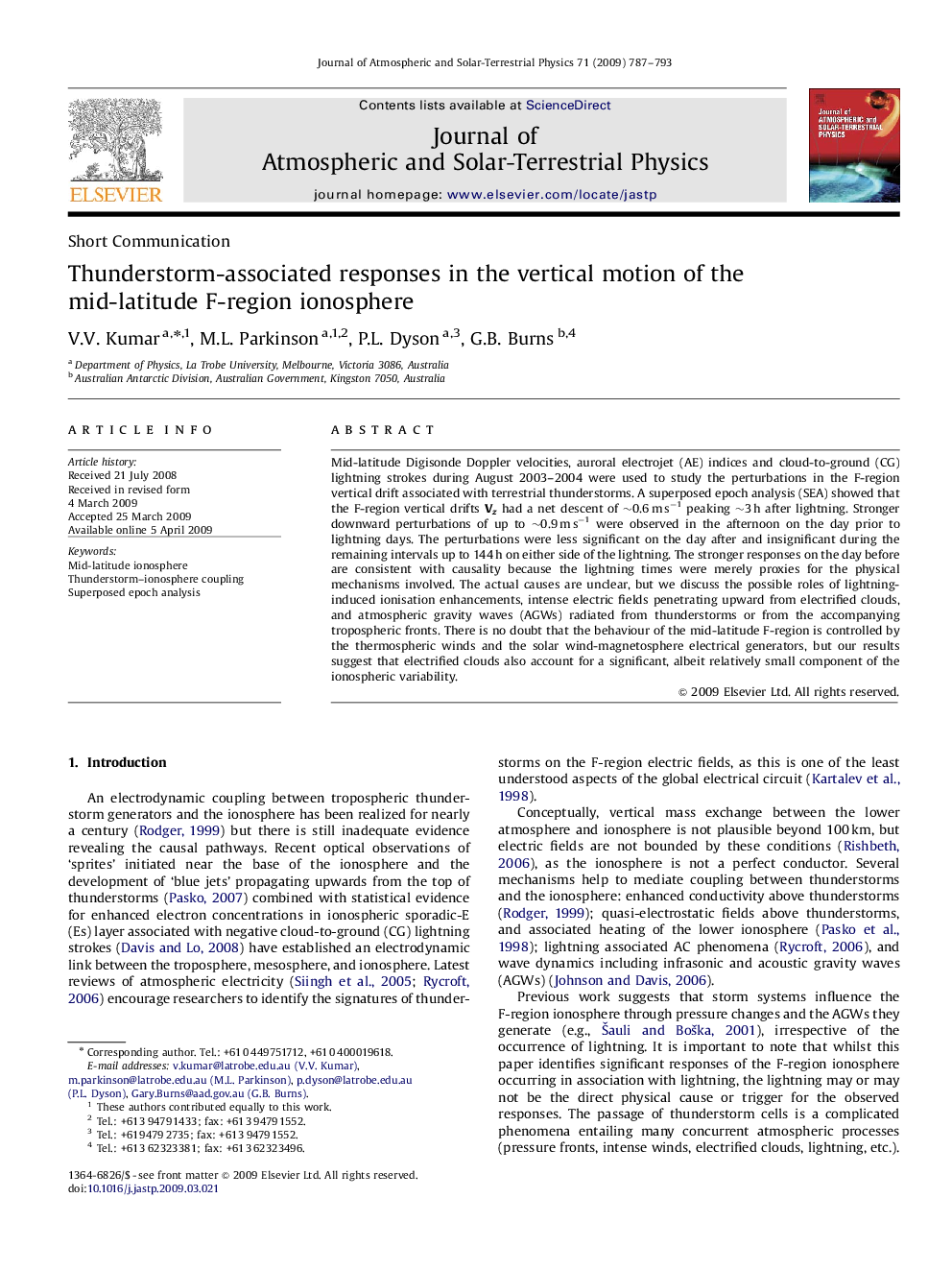| Article ID | Journal | Published Year | Pages | File Type |
|---|---|---|---|---|
| 1777828 | Journal of Atmospheric and Solar-Terrestrial Physics | 2009 | 7 Pages |
Mid-latitude Digisonde Doppler velocities, auroral electrojet (AE) indices and cloud-to-ground (CG) lightning strokes during August 2003–2004 were used to study the perturbations in the F-region vertical drift associated with terrestrial thunderstorms. A superposed epoch analysis (SEA) showed that the F-region vertical drifts Vz had a net descent of ∼0.6 m s−1 peaking ∼3 h after lightning. Stronger downward perturbations of up to ∼0.9 m s−1 were observed in the afternoon on the day prior to lightning days. The perturbations were less significant on the day after and insignificant during the remaining intervals up to 144 h on either side of the lightning. The stronger responses on the day before are consistent with causality because the lightning times were merely proxies for the physical mechanisms involved. The actual causes are unclear, but we discuss the possible roles of lightning-induced ionisation enhancements, intense electric fields penetrating upward from electrified clouds, and atmospheric gravity waves (AGWs) radiated from thunderstorms or from the accompanying tropospheric fronts. There is no doubt that the behaviour of the mid-latitude F-region is controlled by the thermospheric winds and the solar wind-magnetosphere electrical generators, but our results suggest that electrified clouds also account for a significant, albeit relatively small component of the ionospheric variability.
